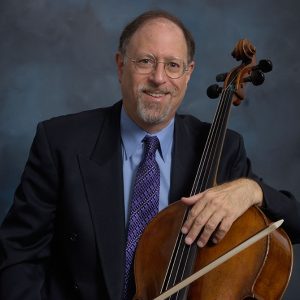
100 Cello Warm-Ups and Exercises Blog 5: Balance Exercises Part 1
Robert Jesselson
“It’s All About Balance”
If you can walk or run then you know something about balance, and you do it every day without thinking about it. We figure out how to balance when we are small children, and then we go through life taking it for granted…
…until something goes wrong. Then our body has to re-learn how to balance. Recently I broke my ankle, and when it had healed well enough the doctor had me stand on one foot, trying to find my balance—first with my eyes open and then closed. It was harder than you would think. He said that I had to retrain my proprioception, the awareness of the position and orientation of my body involving balance. This sensory feedback system also helps us understand where our arms and fingers are in three-dimensional space.
We learn how to balance by ourselves through trial and error in crawling, walking and running. However, if you can ride a bike you probably had someone actually show you how to balance while riding—someone taught you how to do it. Playing the cello involves even more detailed kinds of balancing acts—but unfortunately many of us never learned how to use balance for the most efficient, effective, and ergonomically healthy playing.
One of the underlying secrets to an effective cello technique is finding healthy balances—in the bow hand, in the left hand, in the torso, and in the basic sitting position. Since cello playing is a “learned skill”, we need to make sure that we are really using these balances, and if not that we re-examine our playing, rejecting some bad old habits, and relearning these skills.
As cellist Gerhard Mantel writes in his book Cello Technique—Principles and Forms of Movement: “Every moment the body has to be somehow in balance, even when you are sitting on a chair.” The prerequisite for that is having a good chair at the right height. The “right height” means that the upper part of the leg should be parallel to the floor, and the lower legs should go straight down so that the feet are flat on the floor. Sitting on a chair that is too low means that the knees will be higher than the butt, the upper part of the leg will be angled, and the feet will gravitate under the chair. As a result, the sitting position will be unstable, resulting in a wobbly foundation for playing. Forty-five years ago, when I first started teaching, I would give clinics at public schools where the children were sitting in low metal chairs and their posture was horrible. Nowadays most schools have good cello chairs and the students at least have the potential to sit properly.
We need to have the ability to move freely and easily as we play in order to help stay relaxed. A basic principle of playing is that if a muscle is stiff and tight it will not move; if you can move the muscle then it is more relaxed. In addition, our movements can help to reflect the emotion of the music (notice the etymological relationship between “motion” and “emotion”).
Large Body Movements
Once the basic sitting position has been established, we can start to experiment with the four large body movements that we can use in playing:
- Up/down motion
- Forward/back motion
- Rotational motion
- Left/right motion
It is important to experience and exercise these four basic large body motions in order to expand the repertoire of movements we use in playing. We need to learn the choreography of playing the cello, which starts with these fundamentals. If you watch superb soloists play, you will see that they move their bodies in a variety of ways as they play. For some players movement can enhance the expression of the music, while in others you can see how it helps them relax or get a big sound without forcing. Other excellent cellists keep their movements to a minimum in order to put all their energy into their playing. Pianist Artur Rubinstein said that when he was young he moved around a lot, but as he got older he moved less and played with fewer gestures. Next I would like to discuss what I call “Left/Right motion”, which is perhaps the most important full body motion for balance.
Left/Right Motion
Victor Sazer in New Directions in Cello Playing says “the primary source of your body’s physical power is the natural shifting of weight, or the balancing mechanism.” Violin pedagogue Paul Rolland believed that contrary motion was an essential element of string playing—he called it “bilateral bowing in which the shifting body weight complements the large movements of the bow arm in the opposite direction of the stroke,” based on the research of Polnauer (1964). Other string players who have advocated the importance of the whole body balancing in playing have included Menuhin and Havas.
Left/right motion can also include movement by the body in the same direction as the bow. This is called “unilateral motion” by Frederick Polnauer and others. Many cellists also use this movement for expression. However, since contrary motion is the so important for balance, I would recommend first making sure that this is completely coordinated and secure, and a fundamental part of our body language. The other large body motions (Up/Down, Forward/Back, and Rotational motions) are also important to explore for our cello choreography.
In the next blog I will discuss some important balance issues regarding the bow, including the use of the little finger and the concept of ballistic motions.
Subjects: Practicing, Technique
